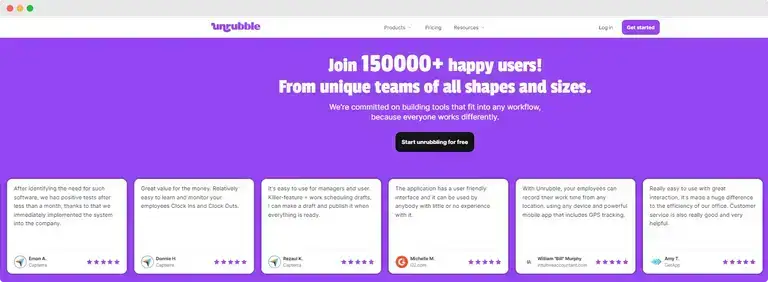Are you struggling to manage your time?
Let's talk about time mapping.
It's a fantastic way to organize your day and keep track of all your tasks.
Imagine it as a personal guide that helps you plan your time better.
In this article, we're looking at how time mapping works and why it's so helpful.
Plus, we've included a handy template to get you started.
So, whether you're juggling work, studies, or just life in general, let's see how time mapping can make your days more manageable and productive.
What is time mapping?

Time mapping is a pretty cool concept. Think of it as a way to organize your day, week, or even month in a way that helps you manage your time better.
It's all about creating a map or a chart of how you plan to spend your time. You might have seen people use planners or digital calendars for this.
You want to map time - how does it work?
You start by jotting down all the things you need to do - work tasks, appointments, gym time, relaxing, and so on.
Then, assign specific time slots to each activity.
It's a bit like making a schedule. However, the focus is more on making sure you're using your time efficiently and balancing different parts of your life.
The cool part is that time mapping can be personalized.
Some people color-code their activities, others use different symbols, and some might even include little notes or reminders.
The idea is to create a visual representation of how you're spending your time. This can help you see if you're perhaps spending too much time on one thing and not enough on another that matters more.
Overall, it's a handy tool for staying organized and making sure you're giving attention to all the important aspects of your life.
Plus, it's satisfying to see your day or week laid out neatly in front of you.
Time mapping vs time blocking vs time budgeting

These three terms can be a little bit confusing.
Let's break them down so you get a clear idea of what is what.
Time mapping
What it is:
Time mapping means creating a visual schedule of your activities. It's focused on drawing a map of your day or week, as well as showing what you'll do and when.
Key feature:
Flexibility and a big-picture view. It's more about general time allocation than strict scheduling.
Best for:
People who want a balanced view of their entire week or month, including work, personal time, and other activities.
Time blocking
What it is:
In time blocking, you divide your day into blocks of time. Each block is dedicated to a specific task or group of tasks.
Key feature:
Structure and focus. You work on one thing at a time, during its allotted block. Such an approach can boost productivity and reduce multitasking.
Best for:
Those who like a structured schedule and need to focus deeply on tasks without interruption.
Time budgeting
What it is:
Think of this like budgeting your money but for time. You allocate a certain amount of time to tasks, almost like giving them a 'time cost.'
Key feature:
Prioritization and efficiency. It forces you to think about how much time you should realistically spend on each task.
Best for:
People who want to be sure they're not over-investing time in less important tasks.
Here's a little table to summarize:

So, while they all help with managing time, each method is unique. Time mapping gives you a broad overview. Time blocking helps you focus on one thing at a time without distractions. And time budgeting ensures you're not spending too much time on less important stuff.
It's all about finding which method vibes best with how you like to work and live.
The benefits of time mapping - better time management, productivity & more

Here's why time mapping is so awesome:
More productivity
With time mapping, you're setting up a clear plan for your day or week. It's like having a roadmap, so you don't waste time wondering what to do next. Plus, seeing your tasks laid out visually can be super motivating.
Less procrastination
Do you ever have those days where you just can't seem to get started, aka procrastination days?
Time mapping helps cut down on that. When you've got a specific time set for each task, it's easier to get rolling. Think of it as having little appointments with yourself throughout the day.
Better task prioritization
Sometimes, it's hard to figure out what to tackle first. With time mapping, you can sort your tasks by importance and urgency.
This way, you put together a puzzle and make sure the most critical pieces are in place first.
More awareness of your time
Have you ever reached the end of the day and wondered where the time went? Time mapping keeps you in check.
You become more aware of how you're spending your hours, which can be a real eye-opener.
Effective time management
Time mapping is your personal planning assistant. It helps you think ahead, anticipate busy periods, and even schedule some downtime.
It's about being proactive rather than reactive.
Better work-life balance
This is a big one. Time mapping isn't just for work tasks. Rather, it's about your whole work-life balance.
Thanks to visually organizing your time, you can be certain you're not just living to work. It helps you carve out time for relaxation, hobbies, and hanging out with loved ones.
Time map template in 8 easy steps

Creating a time map can be a fun and effective way to get a handle on how you're spending your time.
It's not just a time management technique - it's a personal guide to help you navigate through your weekly time commitments.
Let's see how you can create your weekly time map in a few easy steps:
Identify your time categories
First things first, think about the different areas in your life. This could be work, hobbies, exercise, and relaxation. These are the building blocks of your time map.
List your weekly activities
Grab a pen and paper (or your favorite digital tool) and jot down all the things you typically do in a week. Include everything from work tasks to family outings.
Estimate the time for each activity
This is where time tracking can be super helpful. Try to estimate how much time you spend on each activity. Don't sweat it if you're not sure. You can adjust as you go.
Create time entries
Using your list, start creating time entries on your map.
Allocate blocks of time for each activity. Remember, a time map helps you see the whole picture, so try to balance your week with work and personal activities.
Color code for clarity
To make your time map visually appealing and easy to read, use different colors for different types of activities.
For example, use blue for work, green for friends time, and red for important appointments.
Set aside time for flexibility
Life is unpredictable, and you need to be flexible. So, in your time map, leave some blocks open for unexpected tasks or downtime.
Review and adjust regularly
At the end of the week, take a look at your time map. Did you spend your time as planned? Adjust your next week's map based on what you learn. This is a dynamic process and gets better with practice.
Reflect on your time management
Finally, use your time map to reflect on how effectively you're using your time. Are you spending enough quality time with your family? Are work tasks taking over your personal time?
Adjust as needed.
Creating a time map isn't about rigidly scheduling every minute.
It's more focused on gaining awareness and control over the time you spend on various activities. It's a flexible, visual, and effective management technique that can really make a difference in how you approach your week.
A ready-to-use template for a time map (+ a free time tracker)
Especially for you, we've crafted a template for your first-ever time map.
Feel free to use it:
Step 1: Set up your grid
- Create a weekly grid: divide a sheet of paper or a digital document into seven columns, one for each day of the week. Label each column with the day of the week.
- Time slots: break down each day into time slots that work for you. For example, you can create time blocks of one hour each. If you prefer more detail, use 30-minute slots.
Step 2: Define your categories
- List your categories: identify the main categories in your life (e.g., work, family, exercise, personal projects).
- Color code: assign a color to each category for easy visual reference.
Step 3: Fill in your time map
- Weekly activities: using your color codes, fill in your weekly activities in the appropriate time slots. Be sure to include work tasks, personal hobbies, and any other commitments.
- Flexible time: remember to leave some blocks empty for flexibility or unplanned activities.
Step 4: Review and adjust
- Review: at the end of each week, review your time map. Notice areas where you spent more or less time than intended.
- Improve: adjust the next week's map based on your observations.
Extra gift: tips for effective time mapping
- Prioritize - make sure to allocate time for the most important tasks or activities first.
- Balance - aim for a balance between work and personal life.
- Be realistic - don’t overpack your schedule, leave room for rest and spontaneity.
- Reflect - regularly assess how well your time allocation aligns with your priorities and goals.
Example:
Here’s a simple example for one day:
Monday:
- 7:00 AM - 8:00 AM: Exercise (Green)
- 8:00 AM - 9:00 AM: Breakfast & Family Time (Yellow)
- 9:00 AM - 12:00 PM: Work (Blue)
- 12:00 PM - 1:00 PM: Lunch Break (Yellow)
- 1:00 PM - 5:00 PM: Work (Blue)
- 5:00 PM - 7:00 PM: Family Time/Dinner (Yellow)
- 7:00 PM - 9:00 PM: Personal Project (Purple)
- 9:00 PM - 10:00 PM: Relaxation/Free Time (Red)
This template is just a starting point. Feel free to tweak it to match your routine and preferences. Remember, the goal of a time map is to help you manage your time more effectively and create a balance that works for you.
Ready-to-use templates aren't the only thing we are good at. In fact, it's just a drop in the sea of our time tracking superpowers.
Let us introduce you to Unrubble - our standout time tracker.

It's like having a personal assistant for your team's scheduling and time management, but way easier.
It's super easy to set up and use, so you can focus on the important stuff in your job or everyday life. Plus, it's packed with cool features:
- Precise time tracking - keep track of overtime and lateness without a hitch.
- Effortless scheduling - tools like drag and drop, real-time notifications, and powerful wizards make scheduling a breeze.
- Manage PTOs with ease - handling time-off requests is quick and straightforward.
- Real-time timesheets - integrated reporting means no more spreadsheet chaos.
- Mobile friendly - use it on your phone with advanced face recognition for accuracy.
You can start using Unrubble for free and join the ranks of over 149,950 happy users.
Teams love Unrubble for its simplicity and powerful features. It's a game-changer in managing time and tasks efficiently. Are you ready to give it a try and see how it transforms your team's productivity? Now's the time. Sign up - it's free.

Now you're ready to create a time map
Thanks to this article, you can now map time like a true professional.
Remember that this isn't just about planning. It's a way to balance your life. Your time map will help you see how you spend your hours. It's a simple yet powerful guide to organizing your day.
So go out there, create your time map, and manage your hours like never before.
It's your chance to manage your time better and enjoy life more.
P.S. Don't forget to consider using Unrubble for the ultimate time management experience. Register now - no need to thank us later.





